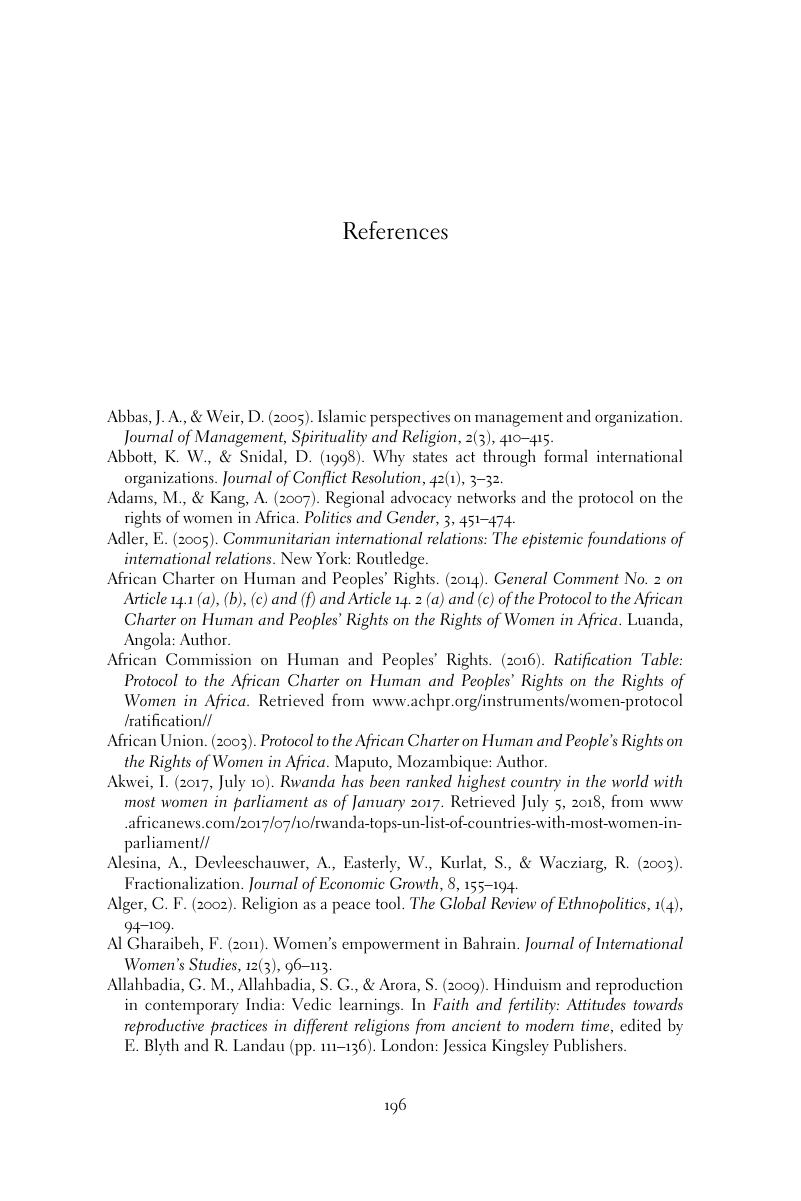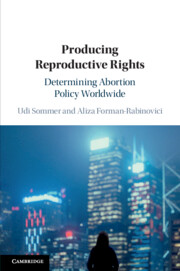Book contents
- Producing Reproductive Rights
- Producing Reproductive Rights
- Copyright page
- Dedication
- Contents
- Figures
- Tables
- Preface
- Acknowledgments
- 1 Introduction: Producing Reproductive Rights
- Part I Civil Society Sphere
- Part II State Government Sphere
- Part III The International Sphere
- 8 Conclusions
- References
- Index
- References
References
Published online by Cambridge University Press: 27 July 2019
- Producing Reproductive Rights
- Producing Reproductive Rights
- Copyright page
- Dedication
- Contents
- Figures
- Tables
- Preface
- Acknowledgments
- 1 Introduction: Producing Reproductive Rights
- Part I Civil Society Sphere
- Part II State Government Sphere
- Part III The International Sphere
- 8 Conclusions
- References
- Index
- References
Summary

- Type
- Chapter
- Information
- Producing Reproductive RightsDetermining Abortion Policy Worldwide, pp. 196 - 220Publisher: Cambridge University PressPrint publication year: 2019



